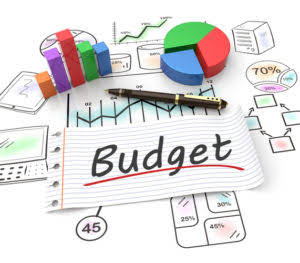Content

A cost allocation plan treats each supporting function separately. It looks at each function and determines a specific allocation method to more discreetly allocate each function of the divisions, programs, grants, and so on. As a result, indirect and other costs are allocated in a more targeted manner. Even if functions are allocated using the same method, the plan will show exactly how much Human Resources, legal, or motor pool costs are allocated to each division, program, grant, etc. . A cost allocation plan will also identify the non-indirect costs or administrative costs that are incurred in support of many programs. For many large grants, administrative costs to operate programs are distinct from indirect costs and must be identified and reported as a condition of receiving a grant. Identifying these costs is something that an indirect cost rate simply cannot do.
- Depending on the circumstances, indirect labor costs can be either fixed or variable.
- Direct labor can be assigned to a cost center or charged entirely to it.
- This becomes the basis for your product’s pricing before you add on your desired profit margin.
- At the end of the month, he will find the discrepancies in the plants and provide recommendations to deal with them through a report.
- But to do so, you need to have accurate and detailed records to back up your claims.
- This cost may be directly attributed to the project and relates to a fixed dollar amount.
- To compare past labor costs and substitution considerations, direct labor will be used.
Indirect cost rates and cost allocation plans both identify and allocate indirect costs. Classic examples of indirect costs include human resources , motor pools, and the agency director. A simple indirect cost rate treats indirect costs equally and produces a percentage that is applied to direct or programmatic functions. For example, if the rate is 22%, an agency applying for a grant will reserve 22% for indirect costs or budget $22 for indirect costs for every $100 received. These are the expenses that can be applied to multiple business activities. These expenses are indirect, and hence, the same cannot be directly assigned to the manufactured goods and services.
Why Do We Need To Understand The Direct And Indirect Costs?
For a software development company, the salaries of developers can be classified as a direct variable cost. A time record sheet can be kept to track how many hours of each developer are spent on a particular software/project. Then, the salary of that developer will be directly allocated for those number of hours to that particular software/project. The more time a developer will spend coding a particular program, the higher will be salary recharge to that project. Thus, salaries of software developers become a direct variable cost for that service. Another example is the cost of direct labour, i.e., the worker or staff who worked directly on manufacturing that product or delivering that service will be considered as a direct variable cost. Let’s take one example of the construction sector, where construction labour is paid daily for construction work.

However, if you’re not certain if an employee’s labor costs are direct or indirect. Then, you must check if you can connect them to a particular product or service. As you can see from the chart above, an accountant at a manufacturing company is considered indirect labor because they have no direct involvement in the production of a product.
At the very least, it may be necessary to amend practices in order to ensure compliance with new regulatory and programmatic requirements. Finally, what we have attempted to do here is demonstrate how to generate Indirect rates in the simplest terms. There are many rules, regulations, variations, and agency nuances, etc. that you will need to learn. Later you can address those issues once you’ve got the basics squared away. Payroll taxes are shown as being entirely allocated to the indirect category. There are some companies that allocate some of these to the direct column, but we will keep this example as simple as possible.
Indirect labor costs might be fixed or variable based on the circumstances. Moreover, it’s just as crucial to keep track of indirect labor expenditures as it is of direct labor costs. Indirect labor, on the other hand, is recorded as overhead rather than the cost of products sold. If you want to determine your https://www.bookstime.com/ rate, you need to use cost allocation.
Direct Costs And Indirect Costs
An indirect cost is a cost that is not directly traceable to a cost object (product, department, etc.). Rather, the indirect cost is sometimes referred to as a common cost which is allocated to the cost objects in a logical manner. When it comes to claiming tax deductions, you need to know the difference between direct vs. indirect costs.

This becomes the basis for your product’s pricing before you add on your desired profit margin. Cost of goods sold is defined as the direct costs attributable to the production of the goods sold in a company. These are the costs which remained separated once the direct costs are considered. For example, the cost of stationery used daily and the cost of tea and coffee served to the employees to keep them awake and energized during the working hours. If you decide a cost allocation plan is the way to go, then you need to select what type of plan is best for your agency.
Office Space Rent
The same cost can be labeled as indirect in one industry and direct in another. For example, fuel cost in a telecom is usually allocated as an Indirect Cost, while for an airliner it is a direct cost. Rent is a monthly cost you pay to keep possession of your office space so you and your employees can work freely. Some employers pay for a coworking space if they have a remote workforce and want to use it for meetings with staff members or clients. Regardless, the payment of rent is essential to ensure that you and your fellow employees are streamlining your workflow. Office supplies normally do not take up a large portion of your company’s budget, but it’s key for you to have vital resources to aid your employees in finishing their daily tasks.

The direct costs of a company can be traced back to its specific product offerings, whereas indirect costs cannot as these costs are not directly tied to production. With the help of these expenses, organizations can minimize their cost of production, enhance their revenues, and reduce their tax burden. Organizations can also reduce their expenses by evaluating the importance of the costs of operating the business and appropriately chose the best ways to reduce the same. Effective product pricing- Product pricing is an essential mechanism for organizations. With indirect costs, organizations can effectively price their products, leverage their sales, and earn better revenues. Indirect expenses are the expenses that are indirect, and we cannot assign these directly to the manufactured goods and services.
How Are Direct Costs And Variable Costs Different?
The essential difference between direct costs and indirect costs is that only direct costs can be traced to specific cost objects. A cost object is something for which a cost is compiled, such as a product, service, customer, project, or activity. These costs are usually only classified as direct or indirect costs if they are for production activities, not for administrative activities . An employee salary is an indirect cost that you need to be mindful of when you’re looking at your financial statements. Staff changes are inevitable, but you want to retain employees that help you provide valuable services to clients and generate profits. Hiring full-time employees can keep your indirect costs at a fixed rate, while hiring temporary contract employees who bill by the hour can help your team with administrative tasks when you need extra assistance.
Although the electricity expense can be tied to the facility, it can’t be directly tied to a specific unit and is, therefore, classified as indirect. Indirect cost is the cost that incurs within the business operation but we cannot track directly to the finished product. However, the company cannot operate their business without indirect cost. They are the expense that remains after we allocate the direct cost. These costs will be allocated to the finish product base on the different method such as Process Costing, Activities Base Costing, or Life cycle costing.
Definition Of Indirect Cost
Commercial (for-profit) organizations usually treat « fringe benefits » as indirect costs. These fringe benefits are applied to direct salaries charged to projects either through a fringe benefit rate or as part of an overhead/indirect cost rate. Therefore, fringe benefits treated as indirect costs should not be included as a direct cost in the « Personnel » category of the budget form of the grant application or on a contract proposal.
- Depreciation Charged On BuildingsDepreciation of building refers to reducing the recorded cost of a building until the value of the structure either becomes zero or reaches its salvage value.
- We’ve created this blog to help you ensure your agency allocates costs correctly , so you can get the most out of your budget and fulfill your agency’s mission.
- Rent for a factory, for example, could be tied directly to a production facility.
- Similarly, materials such as miscellaneous supplies purchased in bulk—pencils, pens, paper—are typically handled as indirect costs, while materials required for specific projects are charged as direct costs.
- Generally speaking, indirect costs include costs related to support staff and related services, insurance, taxes, and floor space.
- There will be staff who aren’t really indirect across the agency but get stuck in the middle and need specialized allocation methods to allocate their costs across only those programs they support.
To figure out how much indirect labor costs should be classified as overhead. On the other hand, variable costs are expenses that change depending on how many goods or services you produce. An example of a variable indirect cost includes equipment maintenance. You wouldn’t record an indirect cost under COGS on the income statement. Indirect costs are expenses that apply to more than one business activity. Unlike direct costs, you cannot assign indirect expenses to specific cost objects.
Indirect Cost: Definition And Example
He is the sole author of all the materials on AccountingCoach.com. Save money without sacrificing features you need for your business. You must subtract your COGS from your business’s gross receipts to figure out your gross profit on your business tax return. When you classify an expense in your COGS, you can’t deduct it as a business expense. This classification allows businesses to decide the price for any product or project using the broken down and classified information. SPA will assess the situation and solicit required institutional approvals. If approval is not obtained, the PI will need to revise the proposal to incorporate the allowable Indirect Cost Rate pursuant to this policy prior to submission to the sponsor.
What Are Indirect Labour Costs?
This policy applies to all Federal and non-Federal sponsored activities, including all externally funded activities. The prices your competitors charge must also factor in when you develop your pricing strategy so you aren’t under- or overcharging customers. Jane is a freelance editor for The Balance with more than 30 years of experience editing and writing about personal finance and other financial and economic subjects. Khadija Khartit is a strategy, investment, and funding expert, and an educator of fintech and strategic finance in top universities. She has been an investor, entrepreneur, and advisor for more than 25 years.
Costs Either Charged Directly Or Allocated Indirectly
Whether completed internally or commissioned by an external firm, quality control is frequently categorized as an indirect cost since these services aren’t linked to a specific cost object. Company M also rents 3 more factories at $4000, $6000, and $8000. Since the payment each month doesn’t change, they can be called variable costs as well because the company will pay more if it rents for multiple months and less if it takes rent for a few months. Let’s say that Company M pays a fixed rent of $5000 every month for a factory on rent. If the company produces thousands of products within the factory, it would be impossible to identify each unit and attribute a portion of rent expenses into it. Moreover, no matter how much the factory produces, the rent doesn’t change.
Indirect Cost %
Moreover, businesses must occur in a regular cycle to avoid cash flow issues. Further, if a company is seasonal and needs extra labor during peak seasons. Then, business controllers must have enough cash on hand to cover the cost rise. Many cash concerns linked with labor costs can be avoided if a corporation planned effectively. In addition, labor costs are usually divided into two categories based on their recognizability with the cost unit. Lower-level of tax liability- With indirect expenses, an organization can reduce its taxable income and hence, lower its tax liability. Consider how valuable the expense is to operating your business and come up with ways to slash the price.
To keep direct labor costs under control, the standard costing technique is applied. Indirect labor costs, on the other hand, are difficult to manage. “The cost of remuneration for an employee’s efforts and skills applied directly to a product or saleable service”. For example, in furniture making, the wages paid to the carpenter is direct labor cost.
The Cost IncurredIncurred Cost refers to an expense that a Company needs to pay in exchange for the usage of a service, product, or asset. This might include direct, indirect, production, operating, & distribution charges incurred for business operations.
The first thing you need to do is list ALL of your annual company costs. You can start with the profit/loss or income statement in your accounting system, or your annual budget, or just your best guess of the categories in which you might incur costs during the coming year. Do the best you can—you can always amend as you learn more about your costs, especially if you are just a startup company now. Please note that we are listing every expense and not yet thinking in terms of direct and indirect costs. These expenses are not directly related to production or service delivery. These expenses would also not be varying with a change in activity level.
Total costs mean all and every kind of expenses which a company may incur. Now, the critical point is, the total costs would always be the same, whether we calculate by the first formula or by second formula. Direct labor costs are an important component of total production costs.

